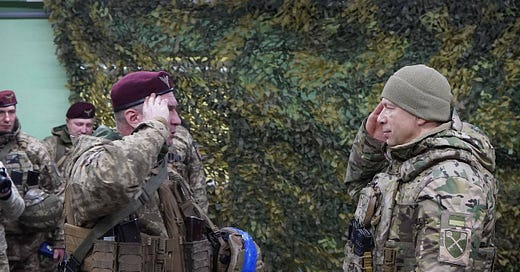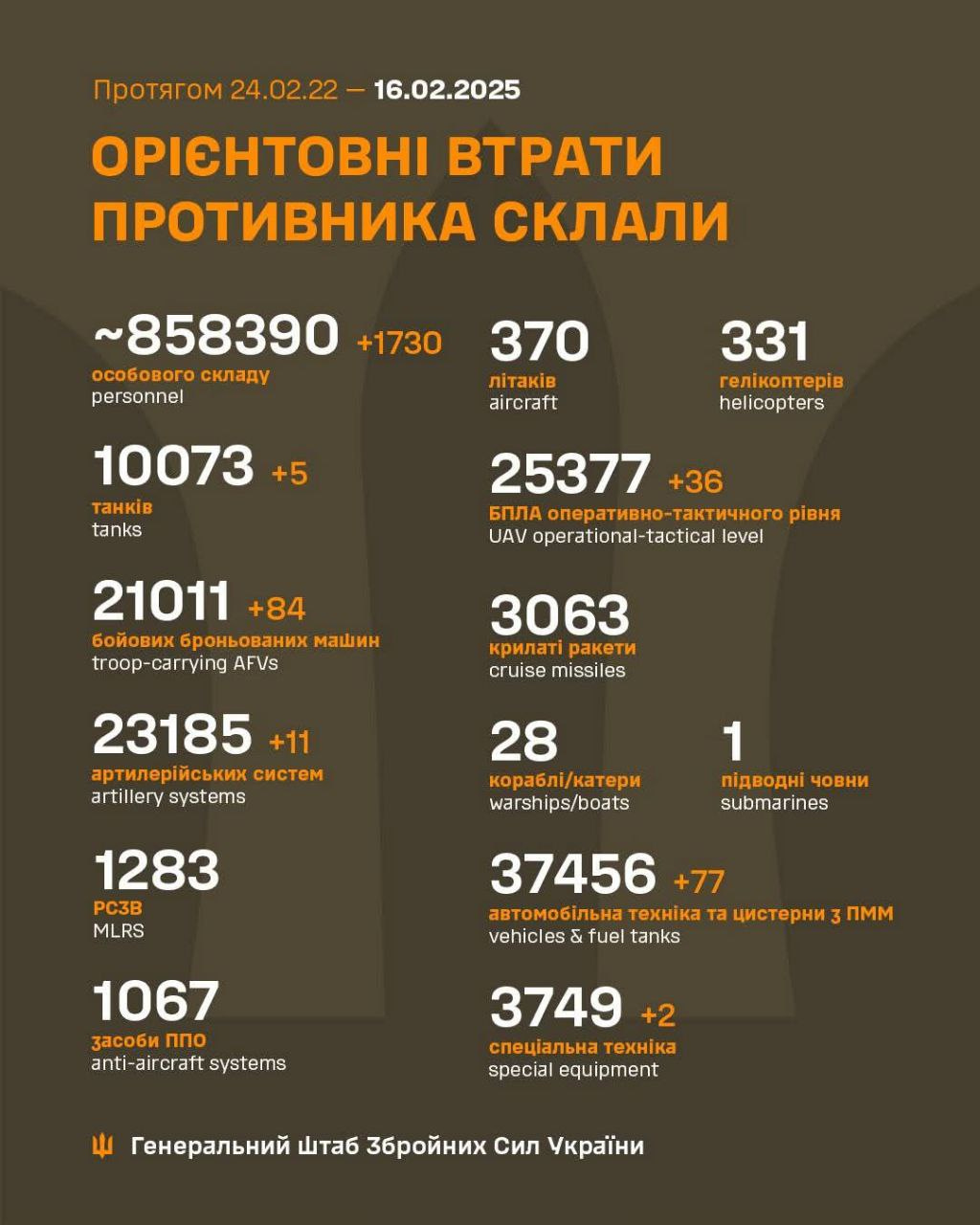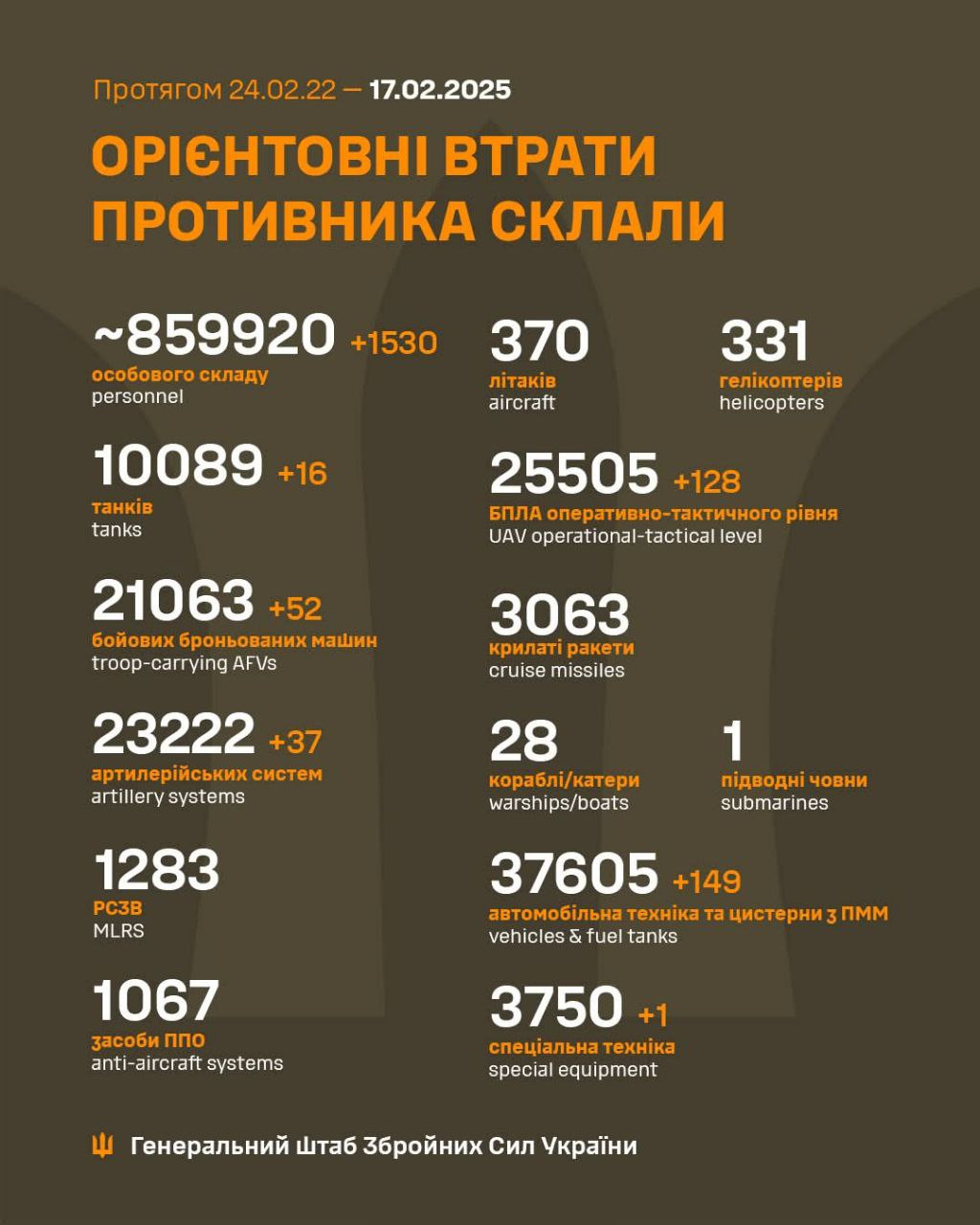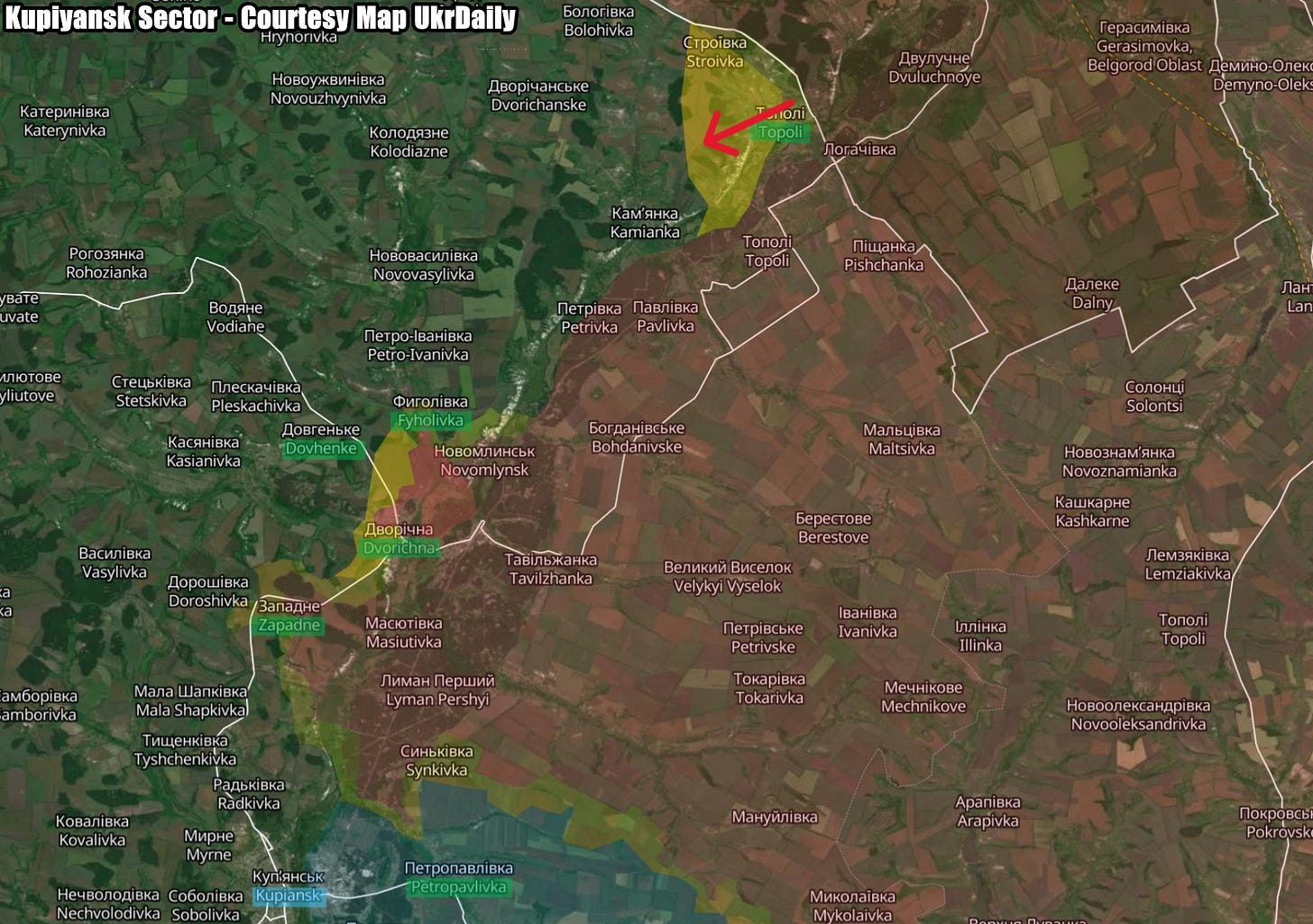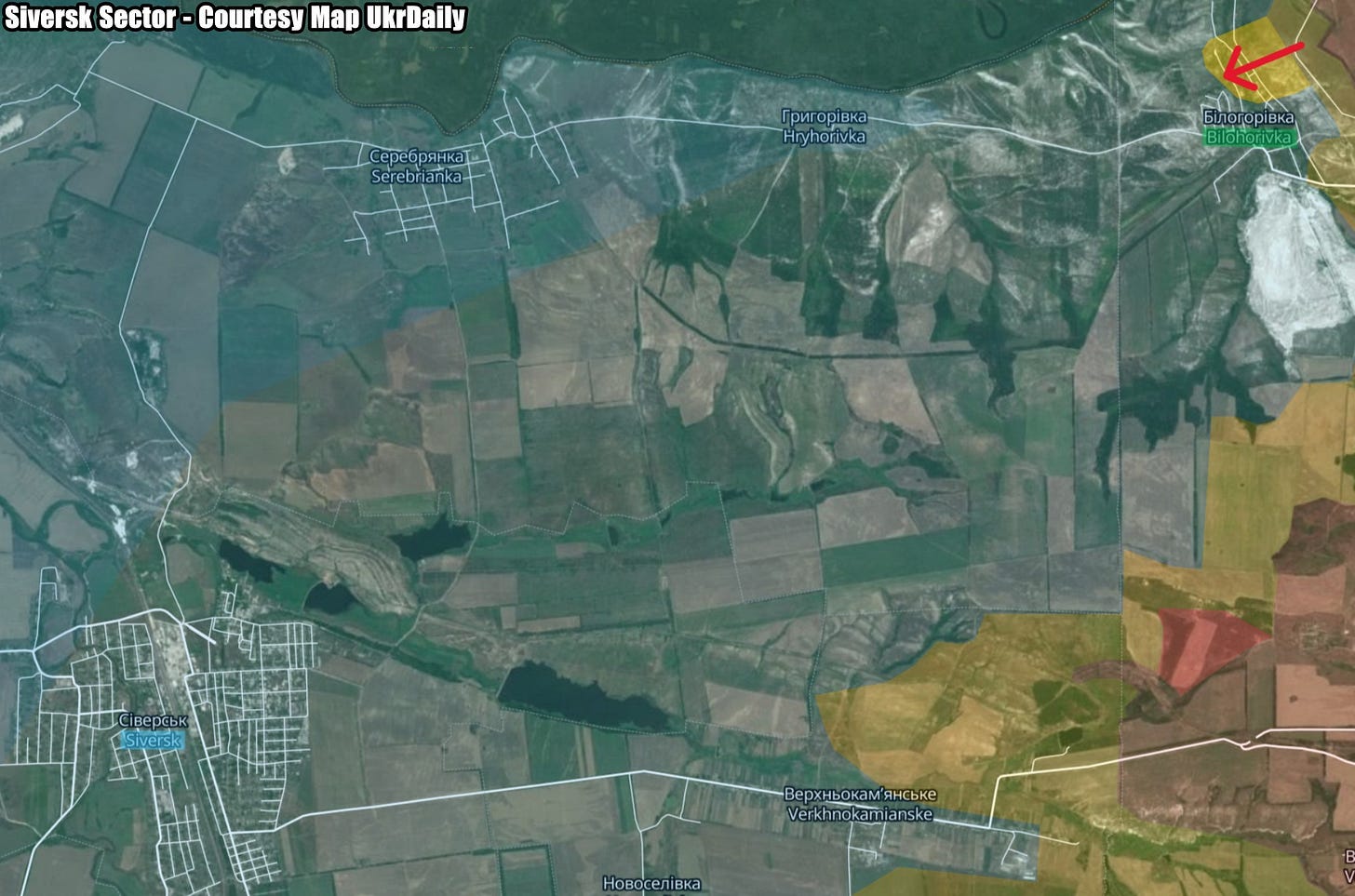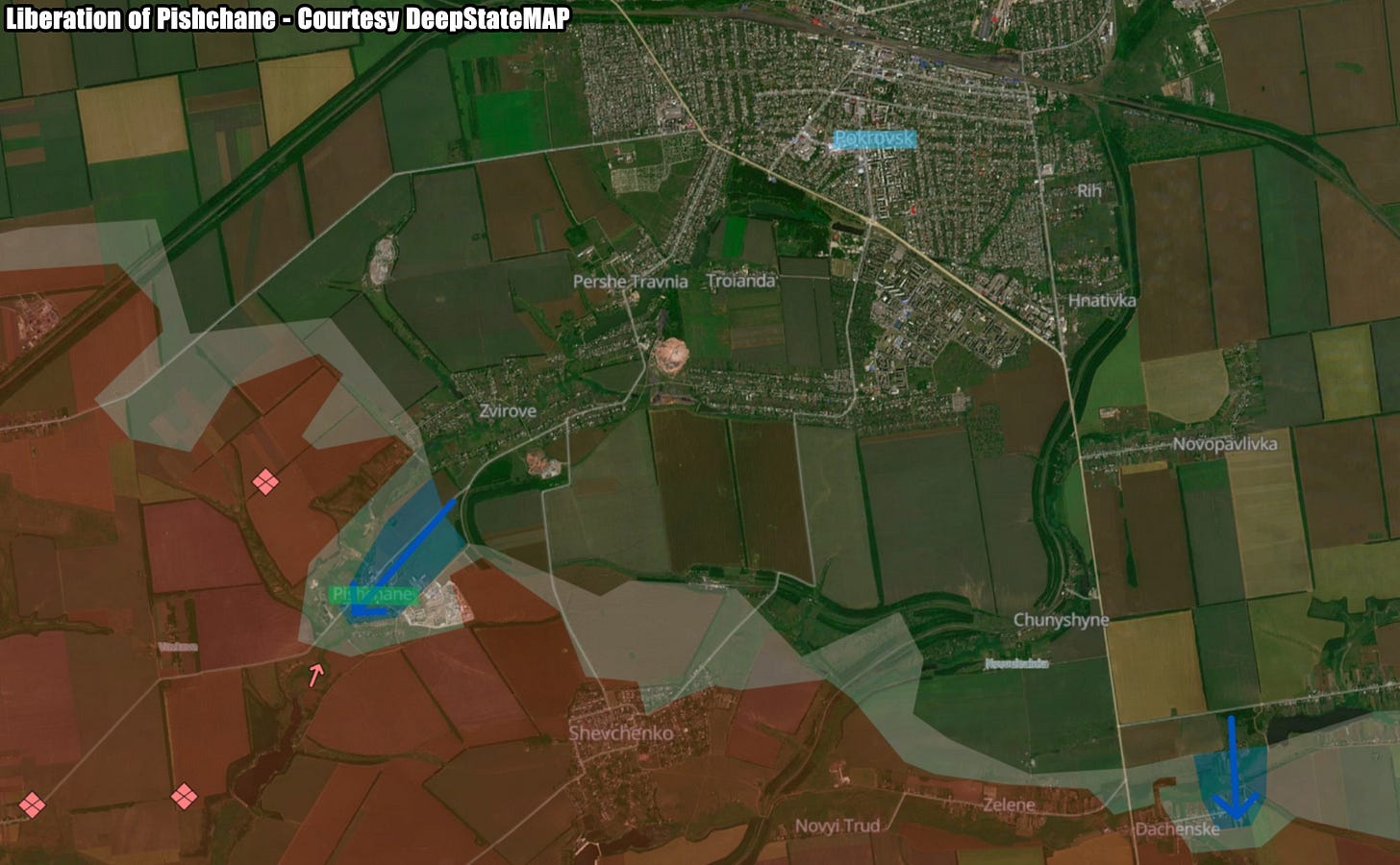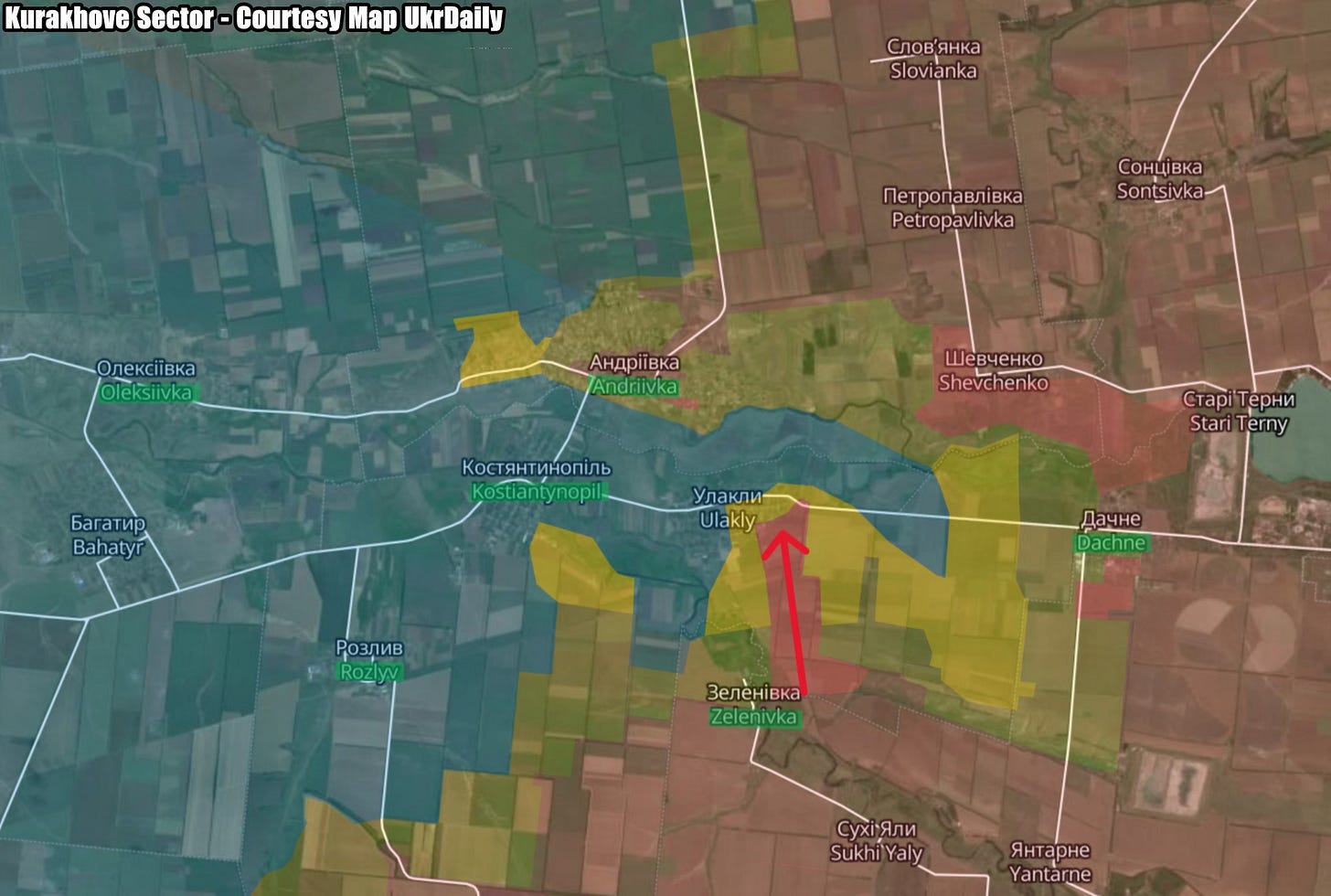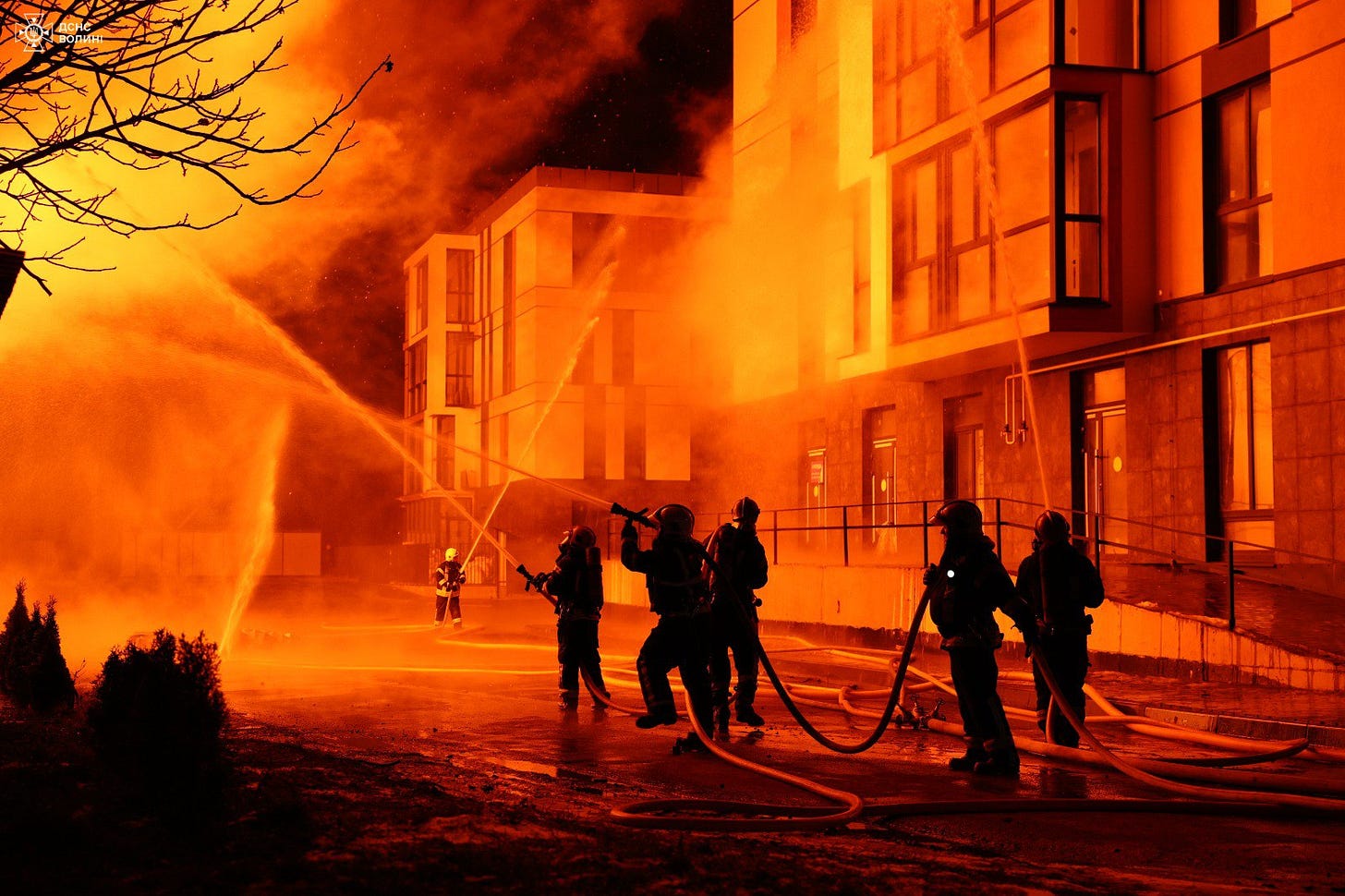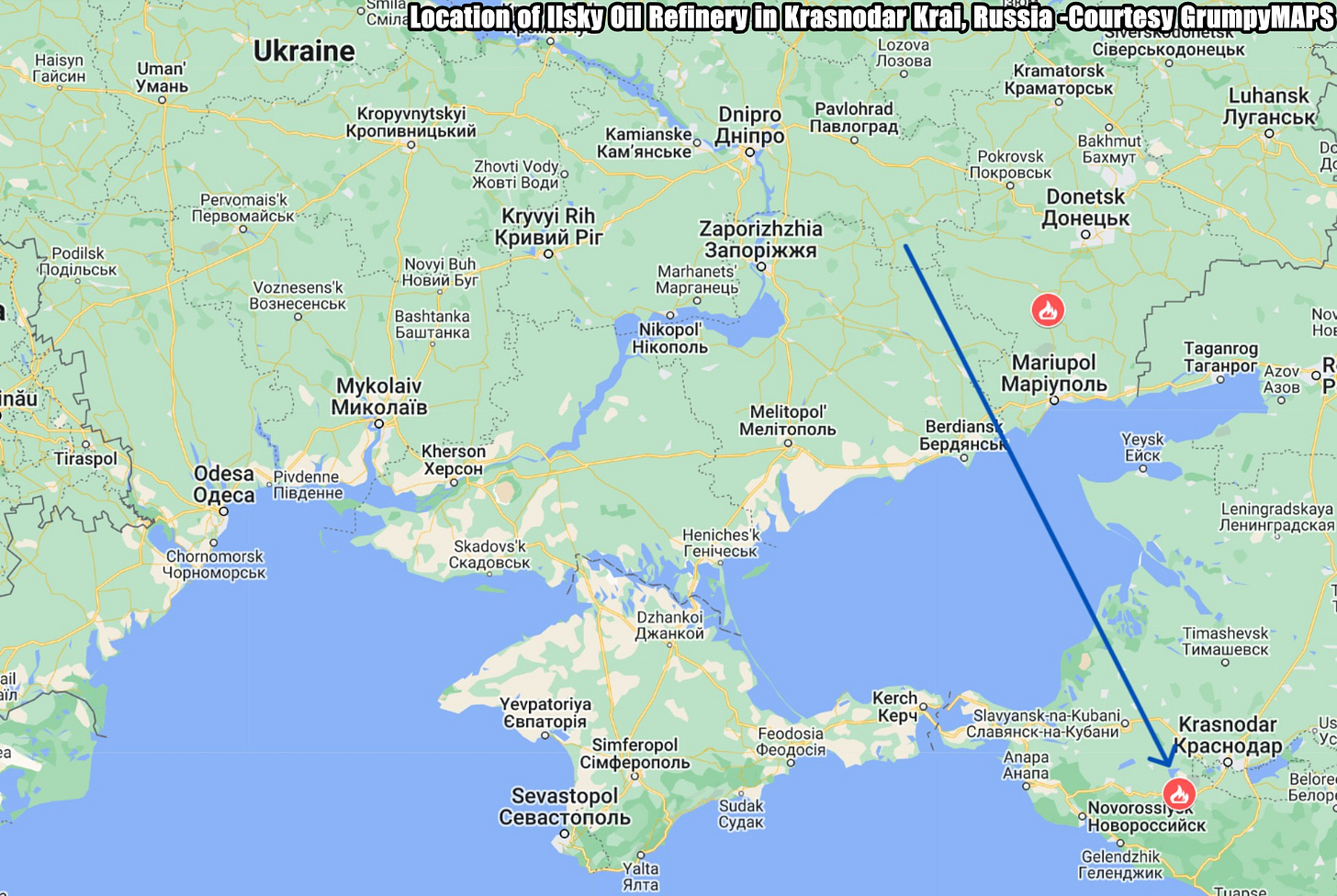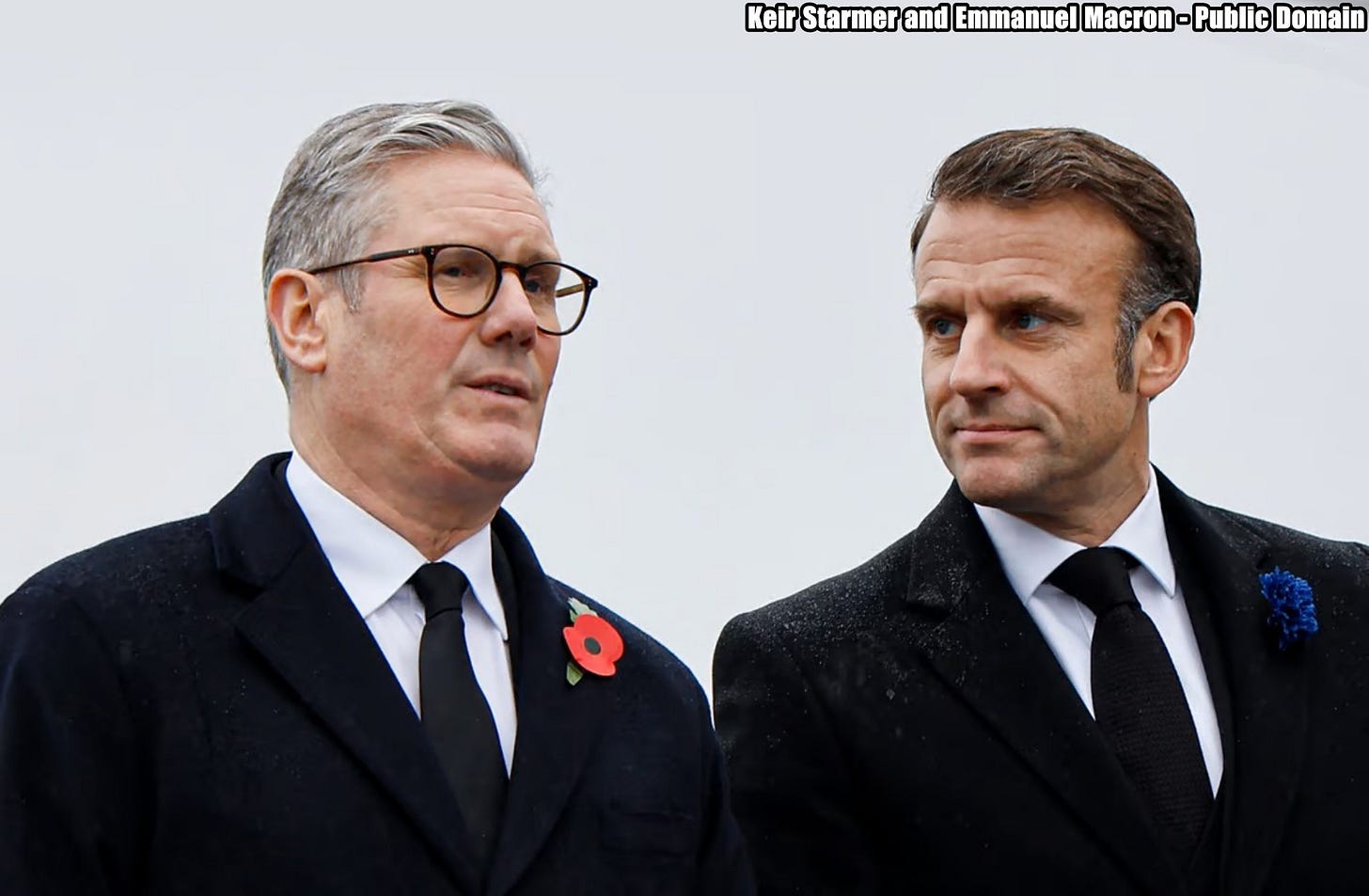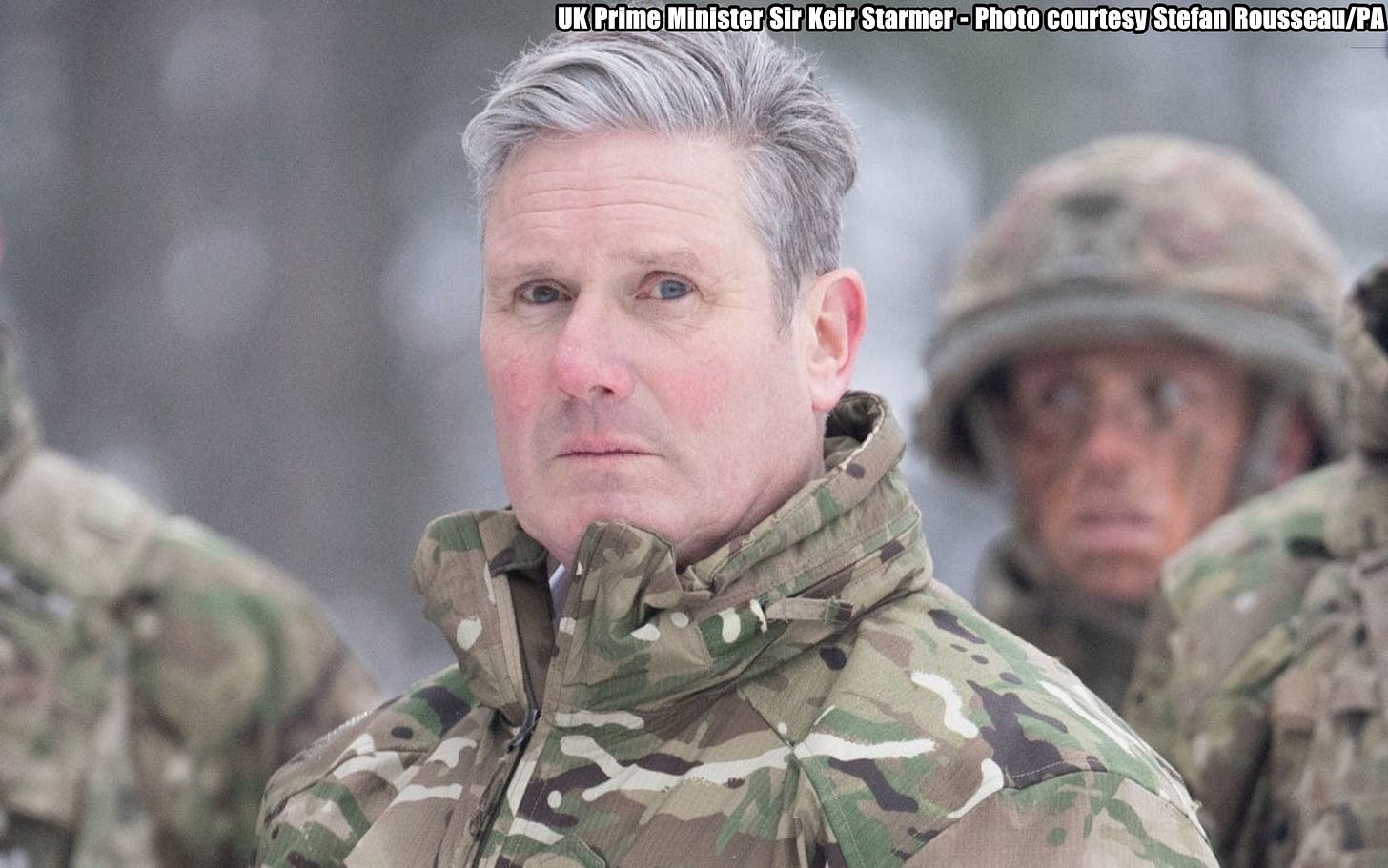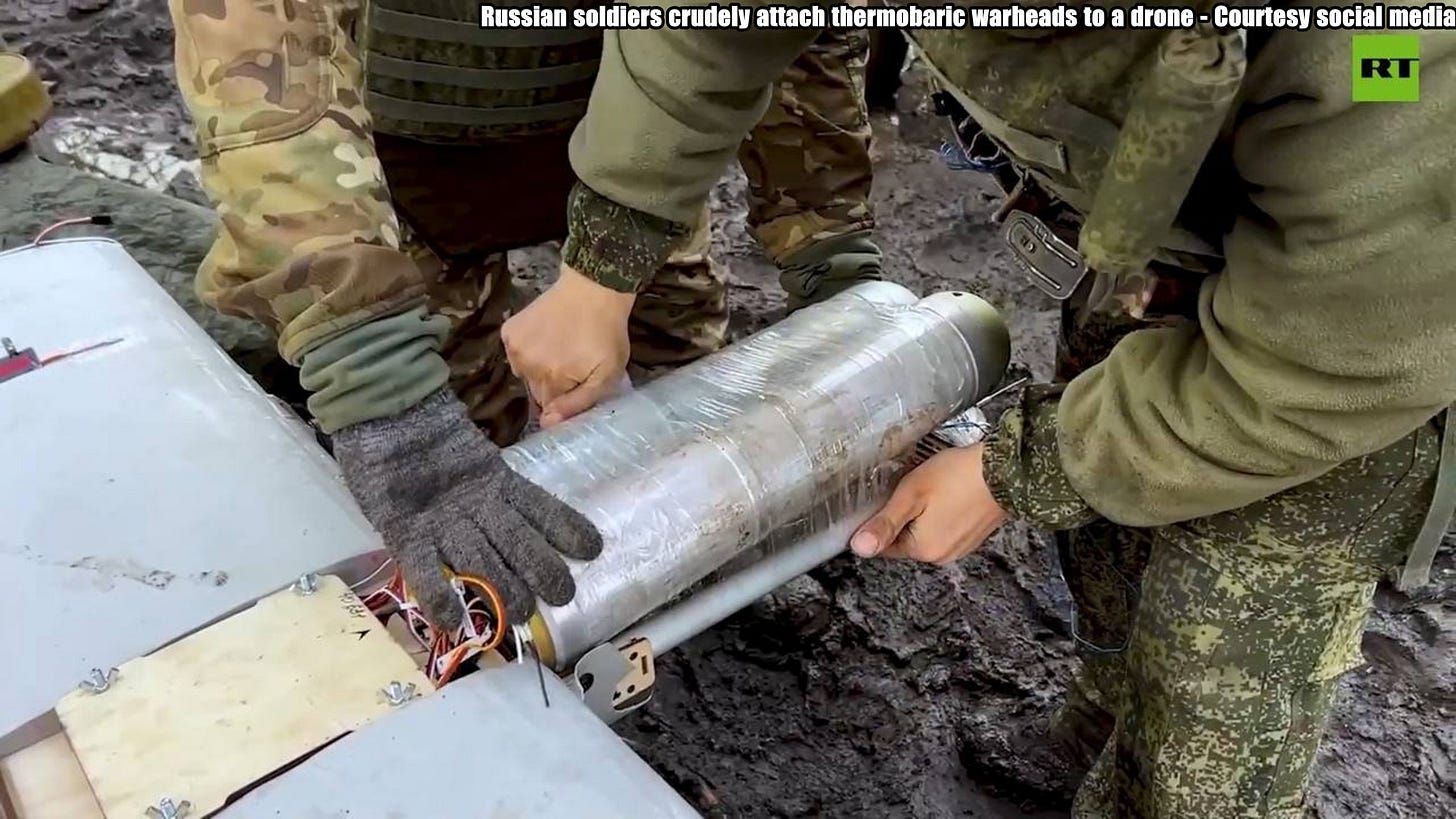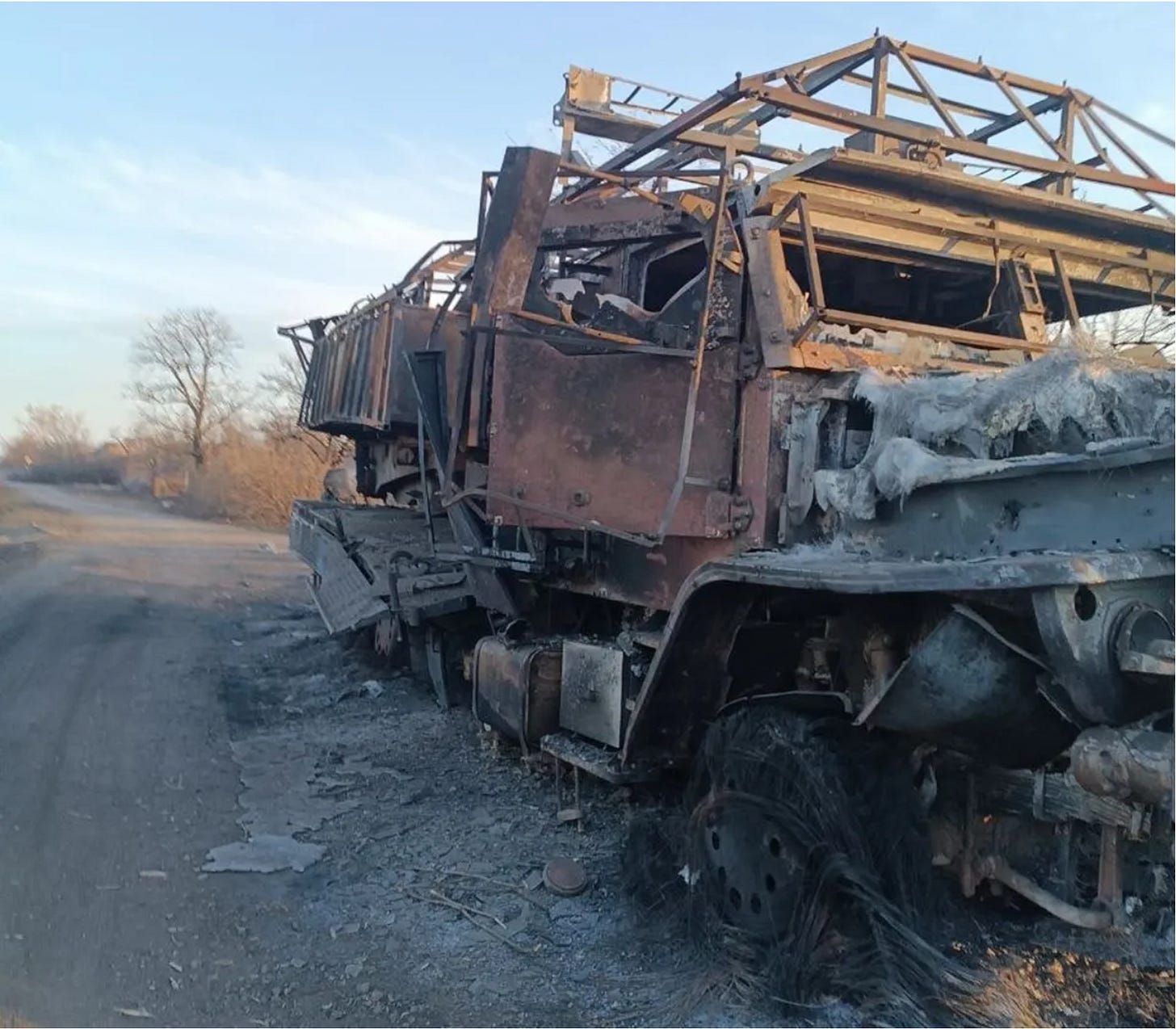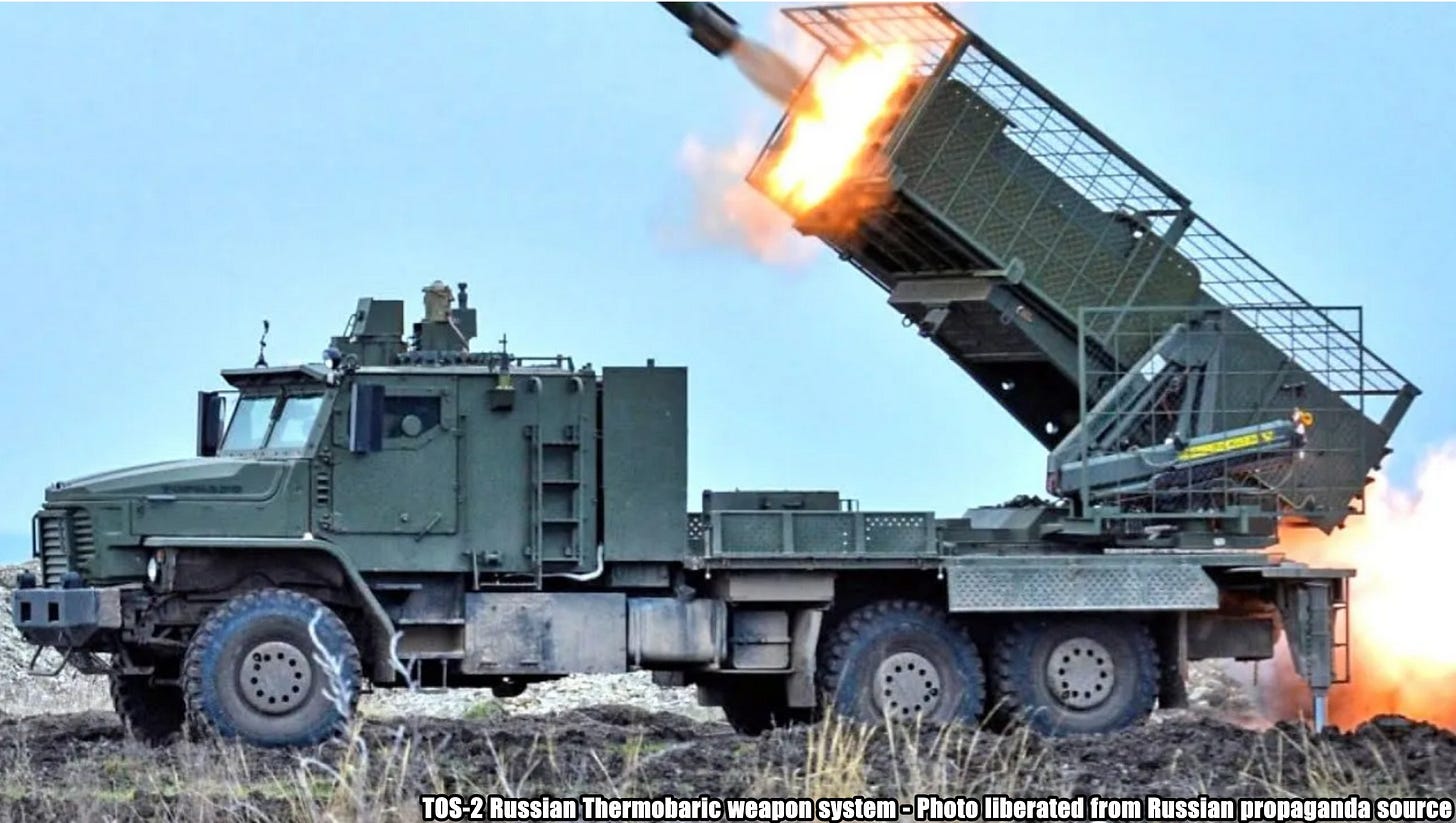Slava Ukraini! In early 2022 I began a Telegram channel aggregating news from a number of sources daily on the war in Ukraine. In June 2023 I began providing a daily draft for the Ukraine War Brief Podcast collecting news from over 70 sources daily, which formed the basis of the script. While the Podcast no longer exists I have continued to make this Brief available for my followers here on Substack for those who wish to keep up with the news from the war.
All the latest news on the Russo-Ukraine War 6 days per week
ALONG THE CONTACT LINE
GSAFU Morning Report
The General Staff of the Armed Forces of Ukraine in its Operational Information update at 08:00 on Dec 17 stated that day 1090 of the full-scale invasion of the Russian Federation against Ukraine had begun.
The situation on the line of combat remains tense in some sectors. Ukrainian defenders continue to actively counteract the Russian aggressor, causing them significant losses in personnel, equipment and technology. Exhausting the enemy along the entire front line and continuing to disrupt the plans of Russian occupiers to advance deeper into the territory of Ukraine.
During the past two days, 390 combat engagements took place.
Over the past 48 hours, the enemy carried out 2 missile strikes, 154 air strikes, used 4,317 drones and fired approximately 9,500 artillery shells across the positions of Ukrainian forces and civilians.
Air Force Daily Report
95 ENEMY UAVS SHOT DOWN, 46 DRONES FAILED TO REACH THEIR TARGETS (LOCATIONALLY LOST)
➖➖➖➖➖➖➖➖➖
On the night of February 16, 2025 (from 9:00 p.m. on February 15), the enemy attacked with 143 Shahed attack UAVs and simulator drones of various types from the directions: Orel, Bryansk, Shatalovo - Russia and two ballistic missiles (in the Odessa region) from the occupied Crimea.
The air attack was repelled by aviation, anti-aircraft missile troops, electronic warfare units, and mobile fire groups of the Air Force and Defense Forces of Ukraine.
As of 09:00, it has been confirmed that 95 Shahed attack UAVs and drones of other types have been shot down in Kharkiv, Poltava, Sumy, Chernihiv, Cherkasy, Kyiv, Zhytomyr, Khmelnytskyi, Dnipropetrovsk and Mykolaiv regions.
46 enemy drone simulators were lost in location (without negative consequences).
As a result of the enemy attack, the Kyiv, Sumy, Mykolaiv, and Odessa regions suffered.
83 ENEMY UAVS SHOT DOWN, 59 DRONES FAILED TO REACH THEIR TARGETS (LOCATIONALLY LOST)
➖➖➖➖➖➖➖➖➖
On the night of February 17, 2025 (from 9:00 p.m. on February 16), the enemy attacked with 147 Shahed attack UAVs and simulator drones of various types from the directions: Orel, Bryansk, Kursk, Millerovo, Shatalovo, Primorsko-Akhtarsk - Russia.
The air attack was repelled by aviation, anti-aircraft missile troops, electronic warfare units, and mobile fire groups of the Air Force and Defense Forces of Ukraine.
As of 09:00, it has been confirmed that 83 Shahed attack UAVs and drones of other types have been shot down in Kharkiv, Poltava, Sumy, Chernihiv, Cherkasy, Kyiv, Kirovohrad, Zaporizhia, Dnipropetrovsk and Odessa regions.
59 enemy drones-simulators - lost in location (without negative consequences).
As a result of the enemy attack, the Kharkiv, Kyiv, Poltava, and Zaporizhia regions suffered.
Combat Operations in the Kursk Sector, Russian Federation
The Institute for the Study of War (ISW), a US based think tank, in its Feb 16 Russian Offensive Campaign Assessment reported that Russian forces recently advanced in the Ukrainian salient in Kursk Oblast. Fighting continued west of Sudzha near Sverdlikovo, northwest of Sudzha near Pogrebki and Malaya Loknya, north of Sudzha near Cherkasskoye Porechnoye, and south of Sudzha near Guyevo.
A Russian milblogger claimed that Ukrainian forces conducted unsuccessful counterattacks near Sverdlikovo, Russkaya Konopelka (east of Sudzha), and Kurilovka (south of Sudzha). A Ukrainian brigade operating in Kursk Oblast reported on Feb 16 that elements of the Russian 155th Naval Infantry Brigade (Pacific Fleet) conducted an unsuccessful mechanized assault consisting of more than a dozen tanks in Kursk Oblast.
Geolocated footage published on Feb 15 indicates that Russian forces recently advanced in southeastern Sverdlikovo.
The deputy commander of a Ukrainian battalion operating in Kursk Oblast reported that Russian forces recently resumed using armored vehicles during assaults and unsuccessfully attacked with roughly seven armored vehicles in an unspecified area on Feb 16. The deputy commander stated that North Korean soldiers recently resumed assaults in groups of 10 to 15 personnel and that the groups are attacking in more spread out formations as part of efforts to complicate Ukrainian efforts to strike the attacking forces. North Korean forces reportedly recently withdrew from active combat operations in Kursk Oblast after suffering heavy casualties in large part from Ukrainian drone strikes, and reports that North Korean have adjusted their tactics on the battlefield to counter Ukrainian drone strikes indicates that North Korean forces may be learning lessons and gaining valuable combat experience.
The Khortytsia operational-strategic group
(Responsible for the northeastern part of Ukraine. )
Kupyansk Sector: Russian forces recently advanced in the Kupyansk direction. Russian forces attacked north of Kupyansk near Dovhenke, Zapadne, Doroshivka, and Kindrashivka; northeast of Kupyansk near Dvorichna and Fyholivka; east of Kupyansk near Petropavlivka and Stepova Novoselivka; and southeast of Kupyansk near Pishchane and toward Novoosynove on Feb 15 and 16.]
Geolocated footage published on Feb 16 indicates that Russian forces recently crossed the Oskil River and advanced in the fields southwest of Topoli (northeast of Kupyansk).
Siversk Sector: Russian forces recently advanced near Siversk. Russian forces continued assaults north of Siversk toward Dronivka, east of Siversk near Verkhnokamyanske, and southeast of Siversk near Ivano-Darivka on Feb 15 and 16.
Geolocated footage published on Feb 16 indicates that Russian forces recently marginally advanced in northern Bilohorivka (northeast of Siversk).
Toretsk Sector: Ukrainian forces recently advanced near Toretsk. Russian forces continued attacking in Toretsk itself and north of Toretsk near Dyliivka and Krymske on Feb 15 and 16.
Geolocated footage published on Feb 15 indicates that Ukrainian forces recently marginally advanced in northern Toretsk.
The Tavria operational-strategic group
(Responsible for the central-eastern and southeastern part of Ukraine.)
Pokrovsk Sector : Russian forces continued offensive operations in the Pokrovsk direction on Feb 16 but did not make any confirmed advances.
Ukrainian forces liberated Pishchane.
The Ukrainian Defense Forces have liberated the village of Pishchane, located in the Pokrovsk sector.
This was stated by the spokesman for the "Khortytsia" OSGT, Viktor Trehubov, on the air of a Ukrainian TV channel, Censor.NET reports.
"Several counterattacks by Ukrainian forces were somewhat successful. In particular, it has been reported, and we can already talk about the liberation of Pishchane village. It is about 5 kilometers south of Pokrovsk. Russian troops were also pushed back from some other nearby settlements," the spokesman said.
Kurakhove Sector: Russian forces recently advanced in the Kurakhove direction. Russian forces conducted offensive operations west of Kurakhove near Kostyantynopil, Oleksiivka, Andriivka, Dachne, and Ulakly and southwest of Kurakhove near Zelenivka and Rozlyv on Feb 15 and 16.
Geolocated footage published on Feb 16 indicates that Russian forces recently advanced southeast of Ulakly. Additional geolocated footage published on Feb 16 shows Russian forces conducting a roughly platoon-sized mechanized assault on the southern outskirts of Ulakly and southwest of the settlement, indicating that Russian forces recently advanced in the area.
The Odesa operational-strategic group
(Responsible for Kherson, Qırım, (also known as Crimea) and the Black Sea.)
There have been no major changes to the combat environment since our last report.
TEMPORARILY OCCUPIED TERRITORIES
Nothing major to report.
THE HOME FRONT
Russian attacks across Ukraine kill 3, injure 8 over the past day.
Russian attacks against Ukraine killed three and injured eight civilians over the past day, The Kyiv Independent reported citing regional authorities on Feb. 17.
Russian forces launched 147 drones from the Russian cities of Orel, Bryansk, Kursk, Shatalovo, Millerovo, and Primosk-Akhtarsk at Ukraine overnight, according to Ukraine's Air Force.
In Donetsk Oblast, two people were killed in the attack against the town of Bilytske, Governor Vadym Filashkin reported.
In Dnipropetrovsk Oblast, Russian forces attacked the town of Marhanets overnight with artillery, injuring four people, including a 64-year-old woman and three men, aged 22, 26, and 54. One of the injured was hospitalized in a moderate severity condition, according to Governor Serhii Lysak.
The day prior, Russia struck the Nikopol district with drones and artillery. As a result of the attacks, a 52-year-old man was killed, while a 74-year-old man suffered a leg injury, Lysak reported.
In Kherson Oblast, Russia targeted 32 settlements, including the regional center of Kherson, over the past day. As a result of the attacks, two people were injured, Governor Oleksandr Prokudin reported.
In Kyiv Oblast, Russian forces attacked several settlements with drones. A man suffered a hand injury in the attack against the Borysil district, local military administration reported. He was treated at the scene of impact.
RUSSIAN WORLD
Ukraine strikes Ilsky Oil Refinery in Russia's Krasnodar Krai.
Ukrainian drones, operated by the Special Operations Forces (SSO) and Security Service of Ukraine (SBU), hit the Ilsky Oil Refinery in Krasnodar Krai and the Kropotkinskaya oil pumping station in the Kavkazsky District of Kuban overnight on Feb. 17, an SBU source reported to the Kyiv Independent.
"The SBU and SSO of the Armed Forces continued the introduction of 'drone sanctions' against two important Russian enterprises that work for the enemy military-industrial complex," the source said.
Residents earlier posted videos on social media purportedly showing a large blaze at the refinery in the Seversky district of Krasnodar Krai. Around 1:30 a.m. local time, the sounds of explosions were also reported.
The attack caused a fire at the plant, which includes six oil refining units with a total capacity of 6.6 million tons per year, the source said. In February 2024, SBU drones also hit this oil refinery, damaging a primary oil-refining unit worth $50 million, according to the source.
Ukrainian drones also hit the Kropotkinskaya oil pumping station, the largest in Russia's Caspian Pipeline Consortium. As a result of the attack, the station was taken out of operation. Oil is now being pumped out, bypassing the station, the source added.
Ukraine considers Russian oil facilities to be valid military targets, as fossil fuel profits supply Moscow's war machine. The Ukrainian military has launched repeated attacks against Russian refineries with long-range drones.
Rostov Region Deputy Governor Arrested for Abuse of Power.
Law enforcement authorities arrested the deputy governor of Russia’s southern Rostov region on charges of abuse of power, the Moscow Times reported Monday citing local media.
Rostov region Deputy Governor Konstantin Rachalovsky is accused of directing state subsidies to companies he allegedly knew were financially distressed, leading to their bankruptcy and a loss of 155.2 million rubles ($1.7 million) from the regional budget, the RBC news outlet reported, citing the local FSB office.
He is at least the third Rostov region deputy governor to be arrested on abuse of power charges since November, when former United Aircraft Corporation CEO Yury Slyusar replaced Vasily Golubev as regional governor.
Slyusar announced Monday that he was appointing Alexei Gospodarev as first deputy governor but did not comment on Rachalovsky’s arrest.
Also on Monday, FSB agents arrested the region’s deputy minister for digital development on similar abuse of power charges related to an overpriced state contract for Russian-made office software, the state-run news agency TASS reported.
That report did not mention the official’s name. However, according to the Rostov region’s government website, the deputy minister for digital development is named Artem Khokhlov.
As part of Rachalovsky’s case, investigators searched the home of former deputy governor Viktor Goncharov, who also chairs the board of the investment promotion agency Regional Development Corporation, according to RBC. It was not immediately clear if Goncharov was arrested.
Rachalovsky was appointed deputy governor for agriculture in September 2023, serving under then-governor Golubev.
INTERNATIONAL NEWS
European leaders set to hold emergency summit on Ukraine.
European leaders are set to gather next week for an emergency summit on the war in Ukraine in response to concerns the US is moving ahead with Russia on peace talks that will lock out the continent. BBC reports.
Sir Keir Starmer, who is expected to attend the summit in Paris, said it was a "once-in-a-generation moment for our national security" and it was clear Europe must take a greater role in Nato.
It comes after Donald Trump's special envoy to Ukraine said European leaders would be consulted but not take part in any talks between US and Russia over ending the war.
Senior White House figures are also due to meet Russian and Ukrainian negotiators in Saudi Arabia in the coming days, US officials say.
In remarks likely to raise concern in Ukraine and among European allies, special envoy Keith Kellogg said previous negotiations had failed because too many parties had been involved.
"It may be like chalk on the blackboard, it may grate a little bit, but I am telling you something that is really quite honest," he said on Saturday.
Sir Keir is understood to see his role as bringing US and Europe together to ensure a united approach to peace in Ukraine.
The UK prime minister will discuss the views of European leaders when he visits US President Trump at the White House at the end of this month.
A further meeting of European leaders together with Ukrainian President Volodymyr Zelenskyy is expected after Sir Keir returns from Washington.
Sir Keir said the UK would "work to ensure we keep the US and Europe together", adding the two could not "allow any divisions in the alliance to distract" from "external enemies".
"This is a once in a generation moment for our national security where we engage with the reality of the world today and the threat we face from Russia," he said.
"It's clear Europe must take on a greater role in Nato as we work with the United States to secure Ukraine's future and face down the threat we face from Russia."
Polish foreign minister Radoslaw Sikorski said Emmanuel Macron had called the summit of European leaders, which has not yet been announced by the French president.
Sikorski said: "President Trump has a method of operating, which the Russians call reconnaissance through battle. You push and you see what happens, and then you change your position, legitimate tactics. And we need to respond."
Earlier on Saturday, Zelenskyy called for the creation of an "army of Europe" amid rising concern the US may no longer come to the continent's aid.
Speaking at the Munich Security Conference, he said US Vice-President JD Vance's speech at the event had made it clear that the old relationship between Europe and America was "ending" and the continent "needs to adjust to that".
But Zelenskyy also said Ukraine would "never accept deals made behind our backs without our involvement" after Trump and Russian President Vladimir Putin agreed to start peace talks.
The US president earlier this week announced he had a lengthy conversation with the Russian leader and that negotiations to stop the "ridiculous war" in Ukraine would begin "immediately".
Trump then "informed" Zelenskyy of his plan.
On Saturday, US Secretary of State Marco Rubio also held a phone call with Russia's foreign minister "building on" the 12 February call between Trump and Putin.
Trump's call with the Russian president earlier this week broke nearly three years of silence between Washington and Moscow.
Senior officials from the Trump administration will start peace talks with Russian and Ukrainian negotiators in Saudi Arabia in the coming days, US Representative Michael McCaul told Reuters news agency.
McCaul, chairman of the House Foreign Affairs Committee, said he understood Zelenskyy had been invited to take part in the Saudi talks, which were aimed at arranging a meeting with Trump, Putin and the Ukrainian president "to finally bring peace and end this conflict".
A day earlier, Vance had launched a scalding attack on European democracies, saying the greatest threat facing the continent was not from Russia and China, but "from within".
In a speech at the Munich Security Conference, he repeated the Trump administration's line that Europe must "step up in a big way to provide for its own defence".
David Lammy has said the UK and EU countries must spend more on defence, with Europe facing an "existential question" even in the event of a negotiated peace in Ukraine.
Starmer: I’m ready to put British troops in Ukraine.
Sir Keir Starmer will announce on Monday that he is willing to put British troops on the ground in Ukraine to enforce any peace deal. The Telegraph reports.
In an exclusive article for The Telegraph, the Prime Minister said he had not taken the decision to consider putting British servicemen and women “in harm’s way” lightly.
It is the first time he has explicitly said he is considering deploying British peacekeepers to Ukraine, and comes ahead of a meeting with European leaders in Paris on Monday.
The emergency gathering was called by Emmanuel Macron, the French president, after it emerged that European leaders had not been invited to early Ukraine peace talks between the US and Russia, and senior members of Donald Trump’s administration signalled that US security support for Europe would be scaled back.
Sir Keir’s decision to speak out will put pressure on allies – especially a reluctant Germany – to publicly back the idea of a European peacekeeping force in Ukraine. The Prime Minster also suggested Britain could play a “unique role” as a bridge between Europe and the US in the Ukraine peace process.
The foreign ministers of Russia and the US will meet in Saudi Arabia on Monday to kick off talks over a peace agreement.
Ukraine has not been invited to the negotiating table and Sir Keir warned against cutting Kyiv out of the talks, likening it to the US decision to cut the Afghan government out of negotiations over the chaotic withdrawal from Afghanistan.
He wrote: “The UK is ready to play a leading role in accelerating work on security guarantees for Ukraine. This includes further support for Ukraine’s military – where the UK has already committed £3 billion a year until at least 2030.
“But it also means being ready and willing to contribute to security guarantees to Ukraine by putting our own troops on the ground if necessary. I do not say that lightly. I feel very deeply the responsibility that comes with potentially putting British servicemen and women in harm’s way.
“But any role in helping to guarantee Ukraine’s security is helping to guarantee the security of our continent and the security of this country. The end of this war, when it comes, cannot merely become a temporary pause before Putin attacks again.”
Since the Russian invasion of Ukraine in February 2022, UK prime ministers have refused to publicly consider sending British soldiers to the country. But in recent weeks Sir Keir has opened the door to considering Mr Macron’s proposals for a Europe-led peacekeeping force in Ukraine.
The idea has been increasingly talked about privately in Europe after it became clear that Mr Trump would never sign off US troops playing that role, with discussions centring on how to make sure that Ukraine is never invaded again after any ceasefire.
A No 10 insider familiar with Sir Keir’s thinking said his decision to go public before the Paris meeting was in part a result of US statements at the Munich Security Conference last weekend, when US administration figures made it clear that Europe would have to play a greater role in its own defence.
The Prime Minister will join the leaders of France, Germany, Italy, Poland, Spain, the Netherlands, Denmark, the European Commission, the European Council and Nato in Paris.
Exactly what a European-led peacekeeping force in Ukraine would look like remains unclear. The Telegraph understands that one proposal to be discussed is for European soldiers to be deployed away from the frontline that would be established in a peace agreement.
Ukrainians would be deployed at the newly-established border, and soldiers from other European nations would be behind them.
But whether European allies would be willing to provide enough troops to make such a peacekeeping force effective remains to be seen. Some estimates have suggested that 100,000 soldiers would be needed.
In his Telegraph article, the Prime Minister wrote: “These crucial days ahead will determine the future security of our continent. As I will say in Paris, peace comes through strength. But the reverse is also true. Weakness leads to war.
“This is the moment for us all to step up – and the UK will do so, because it is the right thing to do for the values and freedoms we hold dear, and because it is fundamental to our own national security.”
Sir Keir is planning to discuss whatever agreements come out of the Paris talks with Mr Trump in Washington, where the two leaders are due to meet before the end of the month.
The issue is becoming complicated by UK wrangling over how fast and how far defence spending should increase in the coming years.
Kremlin reacts to UK’s potential troop deployment in Ukraine.
Kremlin spokesperson Dmitry Peskov has responded to British Prime Minister Keir Starmer's statement about his willingness to deploy troops to Ukraine. New Voice reported citing Russian propaganda outlet TASS on Feb. 17.
Peskov claimed that there have been no "substantive negotiations" regarding the deployment of peacekeeping contingents in Ukraine.
"Europeans are currently talking a lot about peacekeeping contingents—this includes the French and the British, and that is indeed the case. But we all know the rules for deploying peacekeeping forces. So far, no substantive discussions on this topic have taken place," he said.
The Kremlin spokesperson also called the potential deployment of British or German peacekeeping missions to Ukraine a "very complex issue."
Peskov asserted that the problem lies in the fact that both the United Kingdom and Germany are NATO member states.
MILITARY & TECH
Russian Molniya-2 Kamikaze Drones Now Equipped With Thermobaric Warheads.
Russian forces have started to use rocket-propelled grenades from RPO-A Shmel thermobaric weapons as ersatz warheads for their Molniya-2 unmanned aerial vehicles. These relatively small, simple-yet-effective drones, designed to be as affordable as possible, have become more lethal.Defense Express reports.
The installment of this ad hoc warhead was shown in a video published by the Russian Ministry of Defense and noticed by social media users.
Russia’s new TOS-2 destroyed in Ukraine
Images have surfaced on social media allegedly showing the first confirmed loss of Russia’s newest TOS-2 thermobaric rocket launcher in Ukraine. Defence Blog reported.
The multiple launch rocket system, recently deployed to the front lines, now appears to have been reduced to wreckage.
Photos of the burned-out remains of the launcher were published in media outlets, allowing open-source intelligence (OSINT) analysts to geolocate the site to Petrivka, Donetsk region.
According to initial assessments, the vehicle was likely struck by a Ukrainian first-person view (FPV) drone. The additional protective measures installed on the system, including so-called “cope cage” armor, failed to prevent its destruction.
The TOS-2, a next-generation thermobaric weapon system, was introduced as an upgrade over previous versions, incorporating improved mobility and survivability features. However, this incident raises questions about its effectiveness in high-threat environments where drone warfare has become increasingly decisive.
The loss of the TOS-2 underscores the vulnerability of even advanced Russian military hardware to evolving Ukrainian tactics, particularly the use of small drones for precision strikes. While Russian forces continue to field new equipment, the battlefield remains highly contested, with neither side maintaining absolute dominance in firepower or protection.
That’s it for today’s Brief folks if you would like to keep up with events in Ukraine daily please consider subscribing, it’s free!


